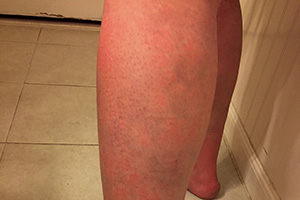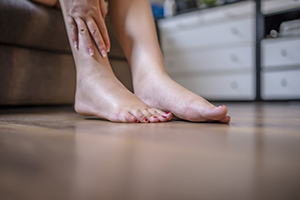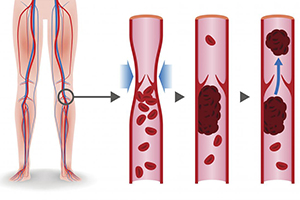
If you are currently expecting a baby, I would like to congratulate you on the upcoming arrival of your little bundle of joy! Pregnancy is a very special stage in a woman’s life, but the changes occurring in your body can take a toll and cause you undue stress and worry. Let’s talk about compression socks pregnancy:
Symptoms of Pregnancy
- When you get pregnant, your body tends to slow down its normal functioning in order to create room of the baby
- Your body will also begin to generate more blood and as the baby grows in the uterus, it exerts pressure on the veins that are in charge of transporting blood from your limbs to your heart
- The pressure on the veins have the effect of slowing down blood flow in your body. This effect can significantly cause edema (painful, swollen legs)
- As you close in towards delivery you may experience a number of common symptoms, such as aching legs and extreme fatigue
Why You Need Compression Socks

To make pregnancy more manageable as well as tolerable, we recommend you use compression socks or medical hoses. However, the best person who should recommend the use of women support hosiery is your doctor.
Please note that in some situations, pregnancy pressure socks and compression stockings are also referred to as maternity socks. Like every phase of your pregnancy, we advise you to only look into buying women support hosiery after consulting with your doctor. Your nurse-midwife or ob-gyn will prescribe the most suitable type of elastic women support hosiery to wear.
Basically, 20 – 30 mmHg pregnancy pressure stockings and compression socks have proven to help improve venous blood flow during pregnancy and after pregnancy. Women support hosiery are some of the best tools to use for improved flow of blood because they have no direct side effects on the mom or the baby.
How Do Compression Socks and Compression Stockings Work
These special pressure socks and compression stockings work by gently squeezing your feet. This allows blood to move freely up your limbs. Best of all, women support hosiery are affordable, accessible, and you can wear them during all stages of pregnancy. Maternity compression socks and pressure stockings come in a variety of pressure rating and pressures to suit every pregnancy as well as individual needs.
What Conditions Do They Treat
There are various conditions that pregnant women during pregnancy experience, and they include:
Varicose Veins

This condition occurs when you lose the elasticity and strength in your veins. This normally occurs when you are pregnant because the growing baby exerts pressures causing the blood in your veins to pool below your vein valves.
This blood pool increases your blood pressure in that specific area, causing your veins to bulge. Your veins would normally become blue when blood in the veins lack oxygen. Blue veins simply means your blood in the affected area is not moving upward toward your heart and into your lungs to pick more oxygen.
Varicose veins are quite uncomfortable and they swell and ache with time during the pregnancy period. You can effectively manage varicose veins with pregnancy medical socks and long pressure hoses.
Symptoms of Varicose Veins
- Lumpy, swollen, and twisted veins
- Dark purple or blue veins
- Aching legs
- Shiny skin discoloration
- Swollen ankles
Spider Veins

These are tiny purple, red, or blue veins that often congregate on the calves, ankles, and thighs. They are small, dilated blood vessels that are near the surface of the skin and they are rarely larger than a few millimeters. Spider veins can be caused by pregnancy and weight gain and they can also be inherited. These veins have no medical significance, but are unsightly. The most effective and safest way of treating spider veins is wearing women legs support hosiery.
Symptoms of Spider Veins
- Itching
- Pain
- Legs feel heavy
- Swelling legs
Edema or Swelling
Swelling is basically a common condition in pregnancy, especially in the third trimester and particularly at the lower extremities. So, the legs, the calves, and sometimes even higher than that can be affected. Some degree of swelling is common in most pregnant women, but not all women will necessary experience the condition. What kind of swelling is normal? Swelling is usually normal in pregnancy, but it should not be caused by increasing blood pressure or preeclampsia.
Things to do to treat and manage legs swelling:
- Wear maternity medical socks or long pressure hoses
- Elate legs
- Make sure you eat healthy
If you notice that one of your legs, calf in particular, is more swollen than the other that can be a more worrisome sign of a blood clot. And for that, you need to call your doctor and an ultrasound test of your legs can rule out any presence of a blood clot.
Swelling as of twenty-four weeks and on in pregnancy is sometimes associated with preeclampsia. Typically, preeclampsia is a combination of several conditions. Elevated blood pressure, protein in the urine, and swelling in the lower extremities are hallmarks of that disorder. Signs of preeclampsia can include blurry vision, headaches, and abdominal pain.
Symptoms of Edema/Swelling
- Swollen extremities
- Puffiness of the face
- Enlarged abdominal girth
How Expectant Mothers Can Use Compression Socks

The strong elastic material used in the production of maternity pressure socks and compression stockings enables the hosiery to exact enough pressure that can keep the calf muscles constantly stimulated while sending blood back to the heart.
The pregnant women support hosiery act like strong synthetic calf muscles, which help in reducing swelling and also make it almost impossible for blood clots to form. With the use of women support hosiery, there can be an easy passage of blood in the lower extremities as the pressure socks or compression stockings squeeze your legs veins when worn. Thereby, making it impossible for varicose veins to develop.

Pregnant women support hosiery feature high-friction material that grips securely around the legs.
To make it possible for the pressure in the maternity compression socks or compression stockings to adjust to your individual needs quickly and correctly, the support hosiery must be custom made.
Even though, the cost of custom tailoring for pregnancy pressure socks or compression stockings does not cost much. In some cases, insurance may cover the women support hosiery cost.

When you want to custom tailor women support hosiery, the measurements normally start at the top of the ankle, then down to the largest part of the calf, which is just above the knee. Pregnancy pressure socks and compression stockings can also be worn all day when prescribed as a remedy, but I advise you to pull them off at night when you elevate your legs.
When you use women legs support hosiery during pregnancy, they will help you feel less pain, giving you more comfort. They can stop your legs and feet from swelling. The firmest maternitypressure socks and compression stockings are normally prescribed to women with severe lymph edema.
Who Else Can Use Them?
These days, not just pregnant women who suffer from poor blood circulation make use of women legs support hosiery, but also during a flight. Also people who do jobs that require them to stand in one position for many hours, such as nurses. People who want surgery for deep vein thrombosis, phlebitis, varicose veins, edema, spider veins and venous ulcers will need to make use of pressure socks and compression stockings as they help to speed recovery.
Highlighted Benefits of Compression Support Hosiery
Unlike before, these days, maternity compression socks and long pressure hoses are some of the most stylish products on the market, and benefit everyone who wears them. Advancements in support hosiery technologies have allowed for pregnancy pressure socks and long medical hoses to be more effective, durable, and sheer in everyday use.
- Boost Blood Circulation to the Legs
- Improve Venous Competence

- Boost Lymphatic Drainage

- Prevent Pooling of Blood in the Legs

- Helps Manage and Heal Legs Swelling

- Prevent the Formation of Blood Clots in the Legs

Popular Articles on ComproGear
Compression Sock Sizes Compression Stockings Size Guide
How Long to Wear Compression Socks for Edema Do Compression Socks Help With Fluid Retention?
Rose Toy Rose Vs Womanizer
Compression Socks for Gout Compression for Gout
What Compression Level is best for Pregnant Women?
There’re three main levels of pressure pregnant women can consider when looking for women support hosiery. The pressure grades are class 1, class 2, and class 3, with 1 being the least compressive and 3 being the most compressive. You need to be checked for Doppler pressure before using either class 2 or class 3 maternity pressure socks or long pressure hoses. This is especially important if you are at risk for peripheral vascular disease.
Class 1 legs support hosiery are often adequate for mild ankle swelling, whereas class 2 maternity pressure socks and long medical hoses are better at preventing repeated venous ulcer formation. Class 3 legs support hosiery may be needed to treat venous insufficiency. All classes of women legs support hosiery come in above the knee and below the knee varieties. Below knee pressure stockings are normally prescribed for ankle swelling, but for uncomfortable varicose veins may need thigh high hoses.
Pull-On Method

Insert your hand into the hoses as far as the heel pocket. Hold center of heel pocket and turn the hoses inside out to heel part. Carefully, position the hoses over foot and heel. Make sure the heel is situated in the heel pocket. Start pulling the body of the hose upwards to the appropriate length.
Etac Socky Method

If pulling the hoses proves difficult for you, you can always try Etac Socky. Start by fastening the Velcro of the socky, then fold the nylon fabric. Go ahead and slide the hose over the socky down to the toe and make sure the heel is down. Pull your hands through the handles of the socky. Then pull the hose up by twisting the socky around your hands. Continue pulling until the socky splits into two parts.
Doff n Donner Method

Turn your hose the right side in as it would be on your limb. Slide the hose down on the provided vertical pole. Leave a few inches at the top of the pole and make sure there are no wrinkles in the hose along the length of the pole. Grasp the doff-n-donner by the edge to hold it securely.
Roll it down over the hose to the base of the pole. Collect all the loose material over your thumbs and lift them onto the doff-n-donner. Begin with one side and then the other. It is important not to leave any loose material below the doff-n-donner. To apply the hose aim the open end of the hose at the foot and roll the doff-n-donner up your limb, pushing gently from the bottom and the sides. When the top of the hoses comes away from the doff-n-donner, roll it back down your limb until you remove it completely. Then smooth out any wrinkles with your hands and pull the top of the hose up to its full height.
Using a Donning device

Possible Side Effects of Pressure Hoses
- Skin irritation and/or itching
- Numbness or tingling of the feet
- Spasms and/or swelling in the toes
Summary
Medical hoses have proven to be quite helpful during pregnancy.
